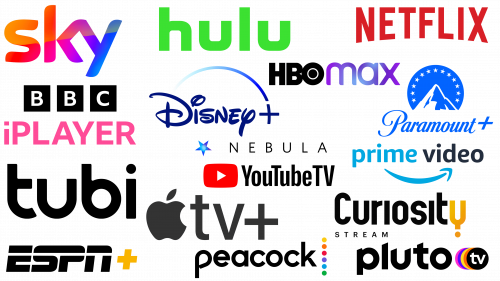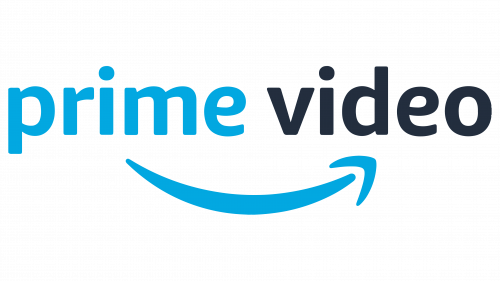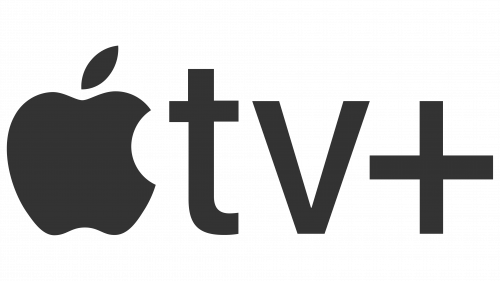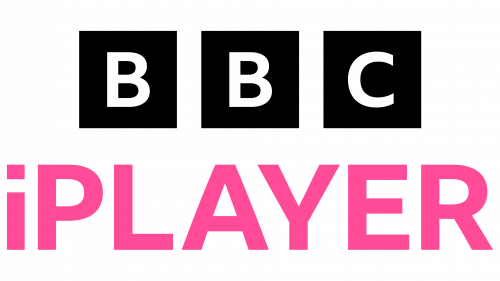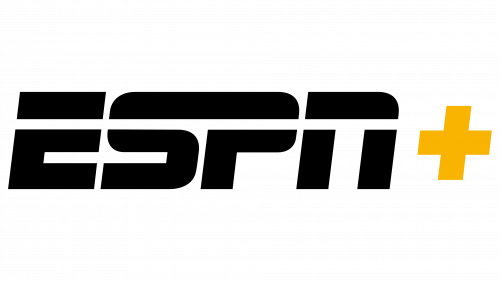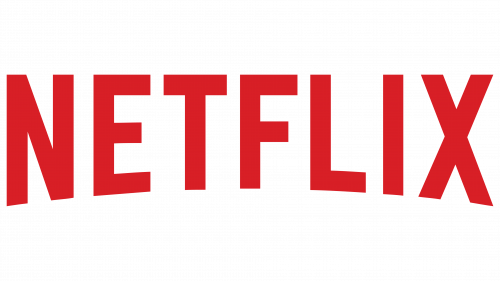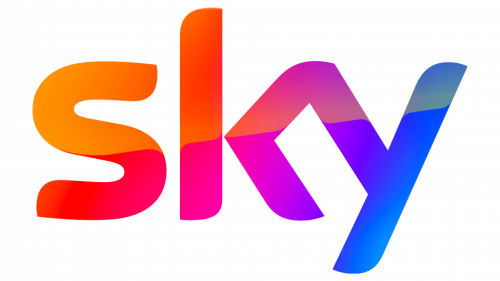The 21st century has ushered in a seismic shift in how people consume television content. The rigidity of scheduled programming has been replaced by an array of streaming platforms that provide unprecedented control over what, when, and where to watch. These platforms are technical marvels and branding phenomena, instantly recognizable through their unique logos.
Netflix, characterized by its distinctive red “N,” continues to be a dominant force in this digital revolution. Not merely a repository for TV shows and movies, Netflix has upped the ante by becoming a major producer of original content. This platform has deftly leveraged its brand to signify more than convenience; it symbolizes a new form of cinematic and televisual storytelling.
Apple TV+ has entered this dynamic market with a flourish. This service, adorned with the universally recognized apple symbol, carries an implicit promise of quality and innovation. The company has entered exclusive partnerships to stream live events and has funded the production of original series and films, often involving prestigious Hollywood figures. Within the streaming space, Apple TV+ is a natural extension of the company’s broader ecosystem, consolidating its hold over user experience.
Then there’s Amazon Prime Video, backed by the online retail giant Amazon. Its logo features the company’s signature ‘smile,’ which doubles as an arrow pointing from A to Z, reflecting Amazon’s aim for comprehensiveness. Prime Video boasts a formidable content library and offers added perks for Amazon Prime members, seamlessly integrating into the broader suite of Amazon services.
Other notables in the streaming category include HBO Max, Disney+, and Hulu. With its iconic abbreviation encased in a black box, HBO Max has extended its brand far beyond its cable origins, featuring HBO originals and a wide range of blockbuster movies and documentaries. Disney+ benefits from one of the most iconic logos in media history, capitalizing on a brand that has symbolized family entertainment for decades. Hulu, known for its green logo, serves a dual role by offering both on-demand content and live TV, thus appealing to a broader demographic.
Subscribing to these services isn’t just about gaining access to content; it’s about participating in a media ecosystem, each with its unique style and appeal. Lesser-known platforms like Peacock, Vudu, and Crackle contribute to the field with specialized content and branding, providing audiences with even greater options.
Logos play a significant role here, serving as identifiers and ambassadors for the content experience a user is likely to have. The visual symbols of Netflix, Apple TV+, Amazon Prime Video, HBO Max, Disney+, and Hulu have become part of the cultural lexicon, representing the ongoing transformation of how people relate to and consume media in this digital age.
An introduction to the most famous TV streaming brand logos
Examining some of the most iconic streaming service logos reveals the intricate thought processes behind their creation. Given the array of offerings, every service aims to capture unique values in its visual representation. A distinct logo becomes especially critical in a saturated market like TV streaming services.
Taking Netflix as an example, the choice of a striking red color serves as an immediate attention grabber. This color selection is not accidental but a calculated move to make the brand easily identifiable.
Many streaming platforms opt for subtle modifications of their original company logos. This strategy allows them to maintain brand consistency while also signaling a focus on streaming content.
The assortment of logos for streaming platforms is vast, ranging from widely recognized names to lesser-known services. Selection for this list aimed to represent this diversity, with particular attention to logos that stand out for their unique design elements.
Amazon Prime Video
Since its launch in 2006, Amazon Prime Video has become a formidable player among streaming services and has more than 200 million users. Prime Video is a global platform that adapts its pricing structure to different regions, making it accessible to a variety of audiences around the world. Among its wide range of offerings is unique content, such as the documentary series “All or Nothing,” featuring sports teams from around the world.
Visually, Amazon Prime Video’s branding is designed for instant recognition, especially for those already familiar with Amazon’s brand identity. The iconic arrow from the main Amazon Prime logo is integrated into the logo, complete with the word “video.” In this case, the Amazon Prime part of the logo has a light blue hue, while the word “video” is represented by black text. This color differentiation sets the service apart in the Amazon ecosystem and emphasizes its focus on video content.
The decision to keep the recognizable arrow from the original Amazon Prime logo is strategically important. It unifies the different divisions of Amazon’s services, thereby reinforcing brand authority and consumer trust. At the same time, the word “video” in black font serves as a visual reference to the nature of the service, differentiating it from other Amazon offerings such as Prime Music or Prime Reading. It reflects the service’s mission to provide a wide range of viewing options, from popular movies and TV shows to original content such as documentaries and series.
Apple TV Plus
Apple, known for its iconic overbitten apple logo, has entered the streaming services arena with Apple TV Plus. While the tech giant is best known for products like the iPhone and MacBook, the Apple TV Plus marks the company’s strategic entry into the streaming content market. Launched in November 2019, the service is available in many countries around the world. It has a subscriber base of more than 30 million, though it has yet to match the reach of competitors like Disney+ and Netflix.
The visual style of the Apple TV Plus includes the classic Apple logo accompanied by the lower-case text “tv+.” This text uses the same font used in various sections of Apple’s website, including product descriptions and press releases. The logo is placed on a transparent background, allowing for flexibility across platforms and promotional materials.
The Apple TV Plus branding utilizes the signature minimalist aesthetic that Apple is known for to maintain consistency. Using the same font and simple color scheme, the streaming service fits into the broader Apple ecosystem, creating a unified experience for consumers already familiar with the brand’s other offerings.
The choice of a transparent background for the logo provides versatility, allowing it to be easily displayed on a variety of interfaces, whether on Apple’s website, mobile apps, or promotional materials on physical media. This design choice supports the idea that Apple TV Plus is an integral part of the Apple family of products and services but is differentiated by its focus on streaming content.
Incorporating a recognizable company logo into the brand identity of the streaming service also contributes to brand recognition and consumer trust. The minimalistic text “tv+” indicates that this is not just another Apple product but a specialized service for watching TV and movie content.
BBC iPlayer
BBC iPlayer is at the forefront of the UK’s digital entertainment system. Free for UK residents, this streaming service showcases rich content from the BBC’s multifaceted lineup of channels. In addition to programs from mainland UK, it allows you to watch programs from other regions of the British Isles, such as Wales and Scotland.
iPlayer programs are generally available for a limited time, which creates a sense of urgency to watch. Notable programs such as Match of the Day regularly appear on the platform and attract large numbers of viewers.
In 2022, there was a significant change in the visual identity of BBC iPlayer. The service has stopped using the BBC logo in its branding for the first time. The new visual elements are represented by different shades of pink and an icon that resembles a play button. This is in stark contrast to previous versions. From 2020 to 2021, the logo was monochrome, all pink, with a play button integrated into the letter “I.”
Prior to 2020, the logo had a more traditional look, with a black and white BBC icon and the rest of the text in a pink hue. This color scheme was distinctive for many years and instantly recognizable to viewers familiar with the BBC broadcast network.
The evolution of the branding reflects iPlayer’s ongoing efforts to modernize its identity and appeal to a wider audience. New shades and updated icons are resonating with younger viewers while maintaining its reputation as a quality and reliable platform.
From a technical perspective, BBC iPlayer has extensive streaming capabilities with both standard and high-definition viewing. The user interface is designed to be easy to navigate, allowing viewers to easily find their favorite shows or discover new content.
Curiosity Stream
Documentaries have long been a valuable medium for both education and entertainment. Since its inception in 2015, Curiosity Stream has carved out a significant niche among documentary-oriented platforms. The platform, which operates primarily in English and German, has garnered attention and user interest, gaining 20 million subscribers across all markets of operation.
The versatility of Curiosity Stream content is one of its defining characteristics. The platform offers an extensive catalog of documentaries on various topics that meet a wide range of interests. Subscribers can choose between different viewing resolutions – standard High Definition (HD) and 4K Ultra High Definition.
The Curiosity Stream logo utilizes an intriguing design strategy. The font is retained in all letters except for the letter “Y,” which is rendered in yellow and accompanied by a dot below its top. The color scheme of the remaining letters of the Curiosity Stream logo changes between black and white depending on the background on which they are displayed.
Curiosity Stream’s growth trajectory is a testament to the platform’s ability to cater to a discerning audience that values quality documentaries.
Disney+
Disney, which has had a significant impact on the entertainment world for decades, is launching its Disney+ streaming service in November 2019. Known for its rich legacy of iconic characters and stories – from Mickey Mouse to The Lion King – Disney+ has become a natural extension of the brand in the digital realm. With a catalog that includes nostalgic films and popular TV shows such as The Simpsons, the service has resonated with audiences in Europe, the Americas, and several other countries around the world.
The visual appearance of Disney+ is simple and straightforward: the classic Disney logo with a font followed by the “plus” symbol. A unique design feature is that the curved line that traditionally runs above the Disney name extends to the “+” symbol, giving it a whimsical feel and ensuring brand unity. This integrated design choice is noticeable across all platforms, both on the Disney+ website and app.
Disney+ has maintained this unified logo unchanged since its inception. Since the core Disney logo has remained unchanged since 1956, a change seems unlikely. The Disney+ logo communicates its identity subtly but effectively. By incorporating the recognizable Disney font and adding the “+” symbol, the service emphasizes its newness and expanding product offerings without losing its connection to the core brand.
This branding approach recognizes Disney’s storied past and underscores its commitment to providing a modern entertainment experience through Disney+.
ESPN+
ESPN is a colossal force in sports broadcasting, especially in the United States. It is a one-stop destination for sports fans, covering sports ranging from American soccer (NFL) to basketball (NBA) to baseball (MLB). The platform is not limited to American territory; it has expanded its horizons to include international markets, particularly the UK.
ESPN offers two different geography-specific streaming services. For US residents, ESPN+ is the primary platform for watching live and on-demand sports content. Launched in 2018, ESPN+ has quickly amassed a large audience, with more than 20 million subscribers. The service provides seamless cross-platform access, allowing subscribers to follow sporting events from a variety of devices. For European audiences, the alternative is ESPN Player, which offers a comparable selection of sports content.
The ESPN+ logo follows the basic design elements of the main ESPN logo. A distinctive feature of the logo is the inclusion of a gold-colored “plus” symbol at the bottom of the logo. This symbolic addition signifies the enhanced features and increased library of content available to ESPN+ subscribers.
From a technical perspective, ESPN+ offers high-quality streaming with minimal latency, aiming to replicate the immersive and immediate experience of watching live sporting events. This utilizes state-of-the-art streaming technology to provide a seamless user experience designed for casual fans and sports enthusiasts alike. ESPN and its digital extensions, such as ESPN+ and ESPN Player, have effectively capitalized on the growing demand for affordable and quality sports content in various markets.
HBO Max
HBO Max is a significant expansion of the iconic US television network HBO, whose acronym stands for Home Box Office. Launched in May 2020, it came to market during the COVID-19 pandemic by coincidence: the service was originally scheduled to debut in 2019. Despite the late launch, HBO Max managed to gather more than 75 million paid subscribers in a relatively short period of time.
The visual identity of HBO Max takes the form of the well-known HBO logo, which is now accompanied by the word “max” written entirely in lowercase. The “max” part is an interesting visual dynamic that utilizes a gradient of purple hues and a glow effect.
This is not the original HBO Max logo design. Preliminary versions used a different color scheme that included cyan, magenta, and red. The HBO part was originally smaller and on a separate line from the word “Max.” The change in the color scheme of the logo from the previous version serves a specific purpose. Purple hues are often associated with creativity and imagination, qualities that align with the diverse and innovative library of content offered by HBO Max. The luminescent effect in the “max” lettering is intended to create a sense of excitement and draw attention to the expanded service beyond traditional HBO programming.
HBO Max chose to keep the core HBO logo intact, a strategic move to capitalize on the strong HBO brand built over the years in television entertainment. In this way, HBO Max gains immediate brand recognition, and the change signals that it is an expanded service with a broader range of content.
Hulu
Hulu, established in 2007, has carved a significant niche among streaming services, amassing more than 45 million subscribers. Although the platform is mainly targeted at audiences in the US and Japan, its vast library of content makes it a significant player in the entertainment industry. The Walt Disney Company largely owns the platform, which further strengthens its influence and resources.
Hulu offers a wide variety of programs. The service is not limited to genres and styles, offering programs for all tastes. Hulu’s library is vast, from classic animated series like “Rick and Morty” and “Family Guy” to the iconic “The Simpsons.” Some plans include subscriptions to other popular platforms like ESPN+ and Disney+, adding value to the service.
The Hulu logo has undergone several changes over the years, though the essence of its design remains largely unchanged. Since its inception, the logo has utilized a specific font that has become synonymous with the brand. The current logo, which has been in existence since 2018, uses a lighter and brighter shade of green, making it more appealing compared to its predecessors.
Before settling on the current design, Hulu went through several iterations of its logo. The original version was the platform’s primary logo from 2007 to 2014. Then came a second version that was used from 2014 to 2017. The third version didn’t last long – just one year before the current design was introduced.
These visual branding changes reflect Hulu’s growth and adaptation in the ever-evolving entertainment sector.
Nebula
Nebula occupies a unique niche in the streaming platform industry. Founded by a group of YouTubers such as Ali Abdaal, the service stands out for its creative-driven model. Unlike conventional streaming platforms, which are often run by large corporations, Nebula is run and owned by independent content creators. This approach allows for a symbiotic environment where creators can freely express their ideas and audiences can consume diverse and creative content.
The platform offers an eclectic range of video content. Both entertaining content and tutorials aimed at developing various skills can be found here. This variety of content is designed to satisfy the intellectual and leisure interests of the audience.
Visually, the Nebula logo is characterized by restrained yet effective design elements. It utilizes a simple typographic approach where each letter is capitalized and evenly spaced. This clean and minimalistic style is complemented by a star at the beginning of the word, giving the logo a celestial feel that fits well with the name and mission of the platform. The star is more than just a decorative element; it symbolizes the platform’s commitment to being a shining beacon for creators and viewers alike.
Nebula has successfully differentiated itself in a crowded market through a combination of unique content and simple branding. The creativity-driven platform brings authenticity and diversity to its offerings, setting them apart from more commercialized competitors.
Netflix
Netflix dominates the streaming television service industry. Founded in 1997 by Reed Hastings and Mark Randolph, former coworkers, the initial business model was movie rentals. Recognizing the untapped potential of the digital sphere, the company switched to Internet streaming.
Netflix’s visual branding is one of the most easily recognizable in the world. The company’s logo has two main versions. One features the company’s full name in a bright red font on a white background, while the other features the initial “N,” also in red, on a black background.
In its earlier years, namely from 2000 to 2014, Netflix used a significantly different color scheme and design. The text was white with a black outline and was set against a red background. This original logo bore little resemblance to the modern logo, which is done in a black, purple, and white palette.
The transition from a physical movie rental service to an online streaming giant is reflected in the branding. This is evidenced by the transformation of the logo from its original intricate design to the minimalist versions used today.
This branding conveys the company’s focus on simplicity and usability and is an instantly recognizable symbol in a market flooded with competitors. The colors chosen by Netflix, particularly red, evoke a sense of urgency and excitement that is consistent with the company’s entertainment content.
Paramount Plus
Paramount is well known in the entertainment world, especially in the film and television production industry. In 2014, the name debuted in the streaming sector under the name CBS All Access. A rebranding in 2021 led to a name change, resulting in the new name Paramount Plus.
This rebranding was not only done in the United States. Australia also saw a transition from the former 10 All Access service to the new Paramount Plus brand. The global presence of the streaming platform is expanding, offering its services in various countries, not only in the U.S. and Australia but also in foreign regions such as Austria and even the German-speaking regions of Switzerland. In some territories, the service operates under different names to suit the preferences of local brands or due to license terms.
The Paramount Plus logo remains straightforward and uncluttered. Typography similar to Paramount’s main logo ensures brand consistency. Some variations of the logo include elements such as mountain and star symbols associated with Paramount’s heritage in film and television.
The content offered by Paramount Plus is a rich mix of elements from movies, contemporary television series, and classics from the archives. However, the platform offers not only pre-recorded content but also live programs. This includes instant access to live news and sports events, which distinguishes it from many competitors in the streaming market.
Paramount Plus prioritizes high-quality streaming to ensure a smooth and lag-free viewing experience. Streaming quality adapts to the available bandwidth, minimizing interruptions.
Peacock
Since its launch in July 2020, Peacock has experienced a meteoric rise, gaining a significant subscriber base of around 20 million users. The company has established its presence mainly in the US, and from February 2023 will start expanding into some European markets such as Switzerland, Austria, UK, Germany, and Italy.
Peacock offers an eclectic range of programming, appealing to viewers with a wide variety of tastes. From British period dramas such as Downton Abbey to classic American TV shows such as Saved by the Bell, the platform is able to maintain audience interest.
The Peacock logo consists of lowercase letters adorned at the end with a cascade of multicolored circles. This color scheme includes shades of yellow, orange, red, blue, aqua, and green from top to bottom. The variety of color schemes is indicative of the diversity and breadth of content offered by the service and reflects its commitment to becoming a one-stop source for a wide range of entertainment.
Peacock chose a simple, aesthetically pleasing, and easily recognizable design that is in line with current branding trends. The lowercase typography gives the brand a modern, casual feel, while the riot of colors gives it a dynamic feel. The balance between simplicity and vibrancy embodies what Peacock strives to offer: a user-friendly platform with multiple viewing options.
A growing subscriber base, an extensive content catalog, and innovative branding strategies make Peacock a competitive player in the streaming sector.
Pluto TV
Founded in 2013, Pluto TV has established a strong foothold in the streaming arena by amassing a significant number of monthly active users, estimated at 72 million. Headquartered in Los Angeles and Berlin, the service has a wide geographic footprint and caters to an international user base.
Pluto TV’s logo is a testament to an effective design that combines simplicity and striking visuals. In it, the name of the service is written in lowercase letters, and the word “tv” is reduced and placed in a black circle. Complementing yellow, orange, purple, and violet colors decorate the text, giving the logo a playful yet refined look. This color scheme serves more than just aesthetic purposes. For example, bright hues symbolize the platform’s dynamism and its desire to provide diverse and interesting content.
The lowercase font chosen for the branding evokes a sense of modernity and accessibility. The design strikes a balance by using a smaller font size for the “TV” part enclosed in a black circle, which emphasizes the main focus on the brand name “Pluto” but at the same time indicates its affiliation with television platforms.
A large part of Pluto TV’s appeal lies in its wide selection of content, allowing viewers to watch a variety of programs and movies in streaming mode, as well as follow broadcasts as they air. Content is categorized by categories, such as crime or science fiction, making it easy to navigate.
Sky
Having become the leading television operator in the UK, Sky has successfully extended its reach to other European countries, such as Italy and Germany, as well as other international markets. Known for its attractive range of programs and packages, Sky continues to dominate viewer preferences in the UK and beyond. The company has not only maintained its leadership in traditional broadcasting but has seamlessly integrated streaming services into its offerings, allowing it to cater to the changing viewing habits of today’s audiences.
Sky News and Sky Sports are among the content available on the service, which can be watched on both traditional TV and streaming. This dual approach allows Sky to maintain a steady user base while adapting to new technologies and content consumption preferences.
Visually, the Sky logo has undergone several changes over its history, although some important elements have remained the same, particularly the choice of wording. The latest version of the logo unveiled in 2020, features a vibrant mix of colors – purple, orange, and various shades of pink. Prior to this version, Sky’s logos kept the same font style but differed in color scheme. The company has been experimenting a lot with logo design: previously, they used elements such as swooshes and ovals.
Sky’s history of emblem transformations serves to symbolize the company’s flexibility and willingness to adapt. Each iteration of the design, whether it be a change in fonts or color palette, is in line with trends in visual branding, ensuring familiarity and novelty for audiences.
Tubi
Since its launch in 2014, Tubi has made significant strides in the streaming industry. Acquired by Fox Corporation in 2020, the company has significantly grown its user base to over 50 million users worldwide, mainly in the Americas, Australia, and New Zealand. Although it was not available in Europe as of February 2023, it plans to enter various regional markets.
Tubi offers a predominantly ad-supported model, distinct from subscription-based services, allowing users to view content in streaming mode without requiring a paid subscription. This opens up a wide range of opportunities to watch movies and TV shows across a variety of genres. Tubi caters to a variety of tastes and preferences, from action and drama movies to documentaries, making it popular with a wide range of audiences.
The Tubi logo consists of lowercase letters typed in a relatively wide font and colored black. This unassuming design allows the platform to convey a sense of accessibility and usability that echoes its model of a free, no-cost service. The simplicity of the logo keeps the focus on the core offering – an extensive catalog of movies and television series.
Fox Corporation’s ownership adds another layer of intrigue to Tubi’s journey. Being affiliated with the media conglomerate gives it the resources and network capabilities to further expand and enhance the content it offers.
YouTube TV
Since its inception in 2005, YouTube has become a global phenomenon, amassing over 2.5 billion monthly active users. What began as a platform for creating user-generated videos has exponentially expanded its reach and diversified its services. One of the brand’s significant growth areas is YouTube TV, which debuted in 2017. This service offers live TV streaming and includes a number of well-known channels such as ESPN, Food Network, and Nickelodeon. While the platform is currently limited to an audience in the U.S., it is generating interest in the possibility of expanding to other countries.
In terms of branding, YouTube TV takes a minimalist approach. The logo includes the ubiquitous YouTube play button in the standard red and white color scheme. The only change is the addition of the letter “TV” in black font next to the original logo. This simple yet effective design emphasizes the platform’s focus on TV content while staying in line with the iconic imagery of the parent brand.
By sticking to the original YouTube logo, YouTube can leverage the parent brand’s reputation and extensive user base. This allows YouTube TV to immediately reach a market that is already familiar with YouTube’s interface and user experience, reducing the learning curve for new users of the service.
In terms of the platform, YouTube TV aims to be a complete alternative to traditional cable and satellite TV. It offers a plethora of channels covering a wide range of interests, from sports and cooking to children’s programs. The platform also includes features such as cloud DVR storage and the ability to stream simultaneously on multiple devices, making it a versatile option for today’s viewing habits.
Another aspect to look out for is YouTube Music, another area that emphasizes the platform’s strategy of embracing different aspects of entertainment. Like YouTube TV, YouTube Music aims to provide specialized services while leveraging the parent brand’s prominence and infrastructure. These different services represent YouTube’s strategic expansion into different areas of digital entertainment.
How to watch your favorite streaming services from anywhere
Many streaming platforms often operate in geographically limited regions, usually due to restrictions related to content license agreements. Despite these restrictions, some of these platforms still extend their services to the entire world, albeit with different catalogs depending on the region.
One popular way to circumvent geographic restrictions is to use a virtual private network (VPN). This technology allows you to redirect your Internet connection through a server in a selected country and access content exclusive to that region. It’s important to remember that some platforms impose residency requirements, making it difficult to use a VPN to access their content.
A VPN is not just about bypassing geographical restrictions; it is also a layer of security that allows you to hide the user’s identity. This feature helps to protect the user from surveillance and maintain privacy. The encrypted connection ensures the privacy of online activities, effectively protecting from unwanted attention.
There are several VPN services on the market, each with its own features and advantages. One of the most effective is often called NordVPN, which is characterized by reliable security protocols and a wide network of servers. Strong competitors are ExpressVPN and SurfShark, each offering a unique combination of speed, security, and server capabilities. These platforms have different pricing models, allowing potential users to choose an option that fits their budget and specific needs.
When choosing a VPN service, connection speeds, server locations, and privacy policies should all be considered. Users often weigh these parameters depending on their needs, whether it’s streaming content from another country or anonymity online.
All the best streaming service logos in one place
Logos in the streaming services industry come in a variety of designs, each telling a unique story. These visual identifiers undergo evolution or dramatic changes to fit a company’s ever-changing ethos or strategic goals. While giants like Netflix and Disney+ have achieved global recognition, new platforms like Pluto TV and Tubi have also taken their place.
Conceptualizing and finalizing a logo for a streaming service requires careful thought. Market demographics, brand values, and aesthetic considerations must be carefully analyzed. This level of detail is not just specific to streaming services; it reflects the dynamics of logo creation across industries. The principles of an attractive color scheme, minimalistic but meaningful design, and market positioning remain the same.
In the rapidly changing streaming industry, a well-designed logo is a beacon of brand identity and a marketing tool. The balance between modernity and timeless elements often plays a key role in design. The choice of font, color palette, and even the placement of elements on a logo can evoke certain emotions and thoughts, which ultimately influence consumer behavior.
Just as companies devote resources to market research, technology, and content acquisition, there is an equal emphasis on logo design. The challenge is to create a visual emblem that resonates with potential and existing users. It should be versatile enough to adapt to different platforms and formats yet memorable enough to be instantly recognizable.
Streaming platform logos may seem simple at first glance, but a closer look often reveals the complexity of their design. These logos are not just aesthetic choices but strategic decisions to increase brand recognition, convey a company’s ethos, and make it stand out in a highly competitive market.
